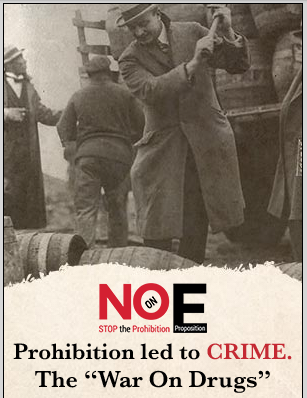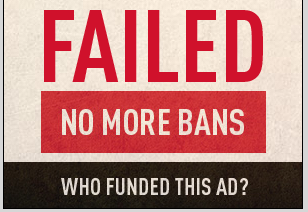April 18, 2018
I have previously commented on the fact that RJ Reynolds Tobacco’s $3.5 million (so far) campaign to try and repeal San Francisco’s path-breaking new law ending the sale of all flavored tobacco products is a replay of Big Tobacco’s unsuccessful effort to overturn the San Francisco workplace smoking ordinance in 1983.
Now, the tobacco companies are reaching back even further, to their unsuccessful campaign in 1988 to block Proposition 99, California’s landmark tobacco control education and research program. Back then they argued that if the voters increased cigarette taxes there would be a huge increase in crime. Check out their 1988 ads here. (Note that you have to wait for 30 seconds for the color bars to end.)
Then compare them to RJR’s 2018 ads seeking to overturn San Francisco’s flavor ban here.
With all that money, you would think that the tobacco companies could come up with a new idea.
If people want to support the law, vote Yes on Proposition E this June. If you want to overturn it, vote No.
April 16, 2018
My UCSF colleagues and I submitted this public comment to the FDA Nicotine Steering Committee. The tracking number is 1k2-92ml-1zcp . A PDF of the comment (which includes the footnote referencing which is lost in this blog post) is available here and and the two attachments are here and here.
April 12, 2018
Big Tobacco usually brags about all their civic activities as part of their “corporate social responsibility” campaigns designed to convince the public and public policymakers what great citizens they are.
But that’s not the case for RJ Reynolds Tobacco, who so far has single-handedly financed the referendum – Proposition E on the June ballot -- to overturn San Francisco’s prohibition on flavored tobacco products (to the tune of $3.5 million so far). They certainly don’t brag about it on their internet ads like the ones below.



April 12, 2018
My colleagues and I just submitted this public comment to the FDA Nicotine Steering Committee. The tracking number is 1k2-92jz-nsej; a PDF is available here.
FDA Should Facilitate Investigational New Drug Applications (IND) for Commercially Available Electronic Nicotine Delivery Devices
Comment for Nicotine Steering Committee
Docket No. FDA–2018–N–0128
Neal Benowitz MD, Michael Matthay MD, Gideon St. Helen, PhD,
Pooneh Nabavizadeh Rafsanjani MD, Stanton A. Glantz, PhD
Tobacco Center for Regulatory Science
University of California San Francisco
April 12, 2018
Policy issue
April 9, 2018
There have been several studies published recently (the latest is here) showing that daily users of high nicotine delivery e-cigarette systems quit more than people who don’t use e-cigarettes. These studies also show depressed quitting or no effect of non-daily users of high delivery systems as well as cig-alikes. Because only a small minority of e-cigarette users (10-20%) are daily users of high delivery systems, the overall population health effect of e-cigarettes on smoking cessation remains negative, i.e., on average smokers who use e-cigarettes are less likely to quit than smokers who do not use e-cigarettes.
In 2016 Sara Kalkhoran and I published a meta-analysis that considered all the available evidence at the time, which found an overall negative effect of e-cigarette use on smoking cessation. (In that paper we also suggested that there was some evidence that heavy users of high delivery systems quit more; as noted above, the evidence to support this view had grown stronger.)
Since then I have been updating the meta-analysis every time a new study comes out. The conclusion that, overall, e-cigarettes depress quitting has been remarkably stable.
